Midsummer night is arguably Estonia’s most important cultural celebration; for those not yet familiar, Adam Rang explains why Estonians celebrate, as well as other (somewhat disputable) facts about this special night.
It’s the white night season in Estonia, a slightly disorientating time for visitors and international residents who might rush to get dressed at five o’clock in the morning because the sunshine streaming through their windows gives the impression they accidentally slept until noon.
With the night rapidly disappearing, Midsummer is right around the corner and with that comes the celebration known to Estonians as jaanipäev. It’s arguably Estonians’ most important cultural holiday, which is only less obvious compared with Christmas due – thankfully – to the lack of commercialisation. Well, except for the occasional local advert reminding us to pick up enough meat and beer. And that one Swedish-set Hollywood movie from a few years ago, Midsommar, although it’s not a particularly cheerful or accurate portrayal of the festivities.
Spoiler alert – like in the movie, there is indeed plenty of singing and dancing around bonfires while wearing flower crowns at Midsummer but, unlike in the movie, you probably won’t encounter any ritualistic human sacrifice.
To set the record straight for those still not familiar with why and how we celebrate jaanipäev, here’s a few things worth knowing about Midsummer in Estonia.
Estonians (possibly) invented Midsummer
Midsummer began as a Pagan celebration across large parts of ancient Europe – from Britain to Ukraine. It marked, depending on who you ask today, either the longest day or the shortest night of the year.
As with anything Pagan, the original details are a little murky. The Pagans were actually a diverse group of different pre-Christian peoples but with overlapping spiritual beliefs that focused on the sanctity of our natural world. There are remarkable similarities across the continent between these ancient celebrations and how we continue to celebrate today in Estonia. For example, archaeologists even uncovered a neolithic sweat lodge close to Stonehenge, which is believed to be part of ancient British solstice celebrations, suggesting they may also have even been enjoying leil (sauna steam).
Pagans didn’t write down their beliefs themselves though and their history was initially recorded – with more than a slight bias – by those who would replace them. Yet Estonia was one of the last parts of Europe to be Christianised and remains one of the least religious – at least in an organised sense – so Pagan beliefs and traditions have left a deep and lasting influence on our culture, which is on full display during Midsummer.
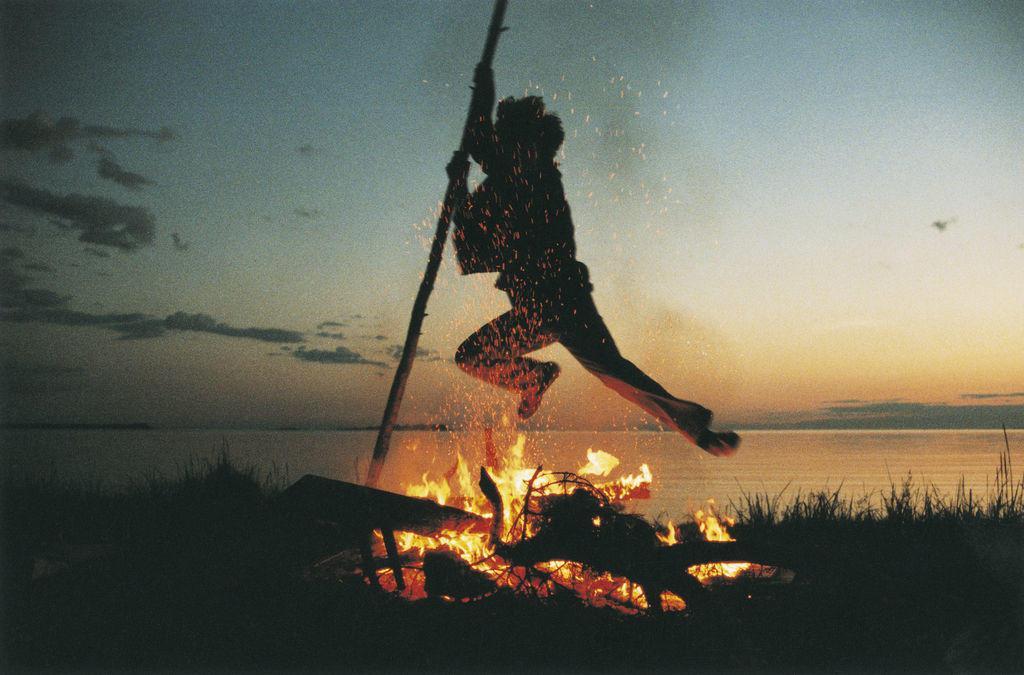
Midsummer continues to be celebrated with varying levels of fervour across the Nordic, Baltic and Slavic worlds, while – to a smaller extent – neo-Pagan movements elsewhere have helped resurrect the tradition at places like Stonehenge.
But, much like Skype and Christmas trees, Estonians can argue that this international phenomenon may have also been born in Estonia. Saaremaa, to be precise, and the village of Kaali.
Some might be rolling their eyes here. Of course, Estonia does quite like claiming international titles as the first in something or the birthplace of something or the most of something per capita.
But the idea that Midsummer began in Estonia is a plausible theory put forward by Lennart Meri, the late historian and the first post-occupation president of Estonia who specialised in Finno-Ugric cultures.
The theory relates to meteorite impacts. Estonia has the world’s highest number (yes, here we go again) of meteorite impacts per square kilometre (although that’s one record Estonians are not too keen on extending). It’s connected to the fact that the country is about as flat as a pancake, so these craters weren’t disturbed by mountain-forming geological activity, not that the universe has any particular grudge with Estonia.
But the most significant are around Kaali as these were not only the result of a large strike but happened relatively recently in human history. Recently enough that they were witnessed by early inhabitants of Estonia and shaped their culture, which we have inherited.

Meri argued that Midsummer celebrations around fire may have originally been based on re-enacting those meteorite impacts.
Connected to this theory is the hypothesis that Saaremaa may even have been the legendary Thule Island, described by the ancient Greeks where the sun went to rest. It is perhaps not a coincidence that tuli means “fire” in Estonian.
We’ll never know for sure, but it’s a nice idea worth discussing around the bonfire. And, either way, those meteor craters really are both significant and awe inspiring, so do go see them this summer.

It’s not quite Midsummer
The question that causes the most confusion to outsiders is why we celebrate jaanipäev starting on 23 June.
Why not 21 June, which is widely recognised as the summer solstice, the actual Midsummer? Why not 24 June, which is literally jaanipäev (St John’s Day in the Christian calendar)? And why not the nearest Saturday like our Finnish neighbours, nor the nearest Friday like the Swedes? Or as late as 6 July like the Ukrainians and other Slavic peoples?
Ok, buckle up, because the answer is a wildly confusing ride through astrophysics, religious history and geopolitical upheavals. Bear with me.

Astronomically, Midsummer is the exact moment in our year around the sun that our hemisphere is most directly tilted towards it. The day closest to that moment is the longest day and the night closest to that is the shortest night.
But our calendars here on Earth aren’t neatly synced with any of that. So it’s most commonly on 21 June but some years it can be on 20 June and others on 22 June. Plus, time zone differences mean the Midsummer point can take place on different days across the same hemisphere in the same year. Also, if you’re celebrating the shortest night, like here in Estonia or the longest day like in Britain, then that’s a further 12-hour discrepancy. And, added to all this, is the fact that our calendars have been altered over time since the celebrations began, which puts us further out of sync if it’s already been fixed to a particular day that was originally most likely to be closest.
And that’s exactly what Christians did when merging Midsummer with St John’s Day, prior to calendar alterations.
The process of Christianisation was done not by entirely destroying existing Pagan cultures, but by redefining many aspects of them as Christian. That included Midsummer, which coincided most closely with the Christian Nativity of Saint John the Baptist, just as the winter solstice became the celebration of Jesus’ birth. So, across Europe, Midsummer became St John’s Day – or jaanipäev here in Estonia.
And Christian festivities tend to be celebrated on their eve, like Christmas is here in Estonia, as is the secular New Year’s. So it’s a bit confusing when people talk about celebrating jaanipäev on 23 June, as that’s technically called jaanilaupäev (St John’s Eve), but it’s the jaanipäev party in reference to the following day.
We can call this cultural appropriation or cultural fusion but it’s the reality that our Midsummer today is a mishmash of that complicated history although with a wonderfully stubborn adherence to our Pagan roots.
The irony is that countries that have a deeper Christian history, like Britain, have a less Christian influenced Midsummer today precisely because the original celebration was eventually forgotten and has been reignited by neo-Pagans who are redeveloping it from scratch based on the date usually closest to the astronomical Midsummer.
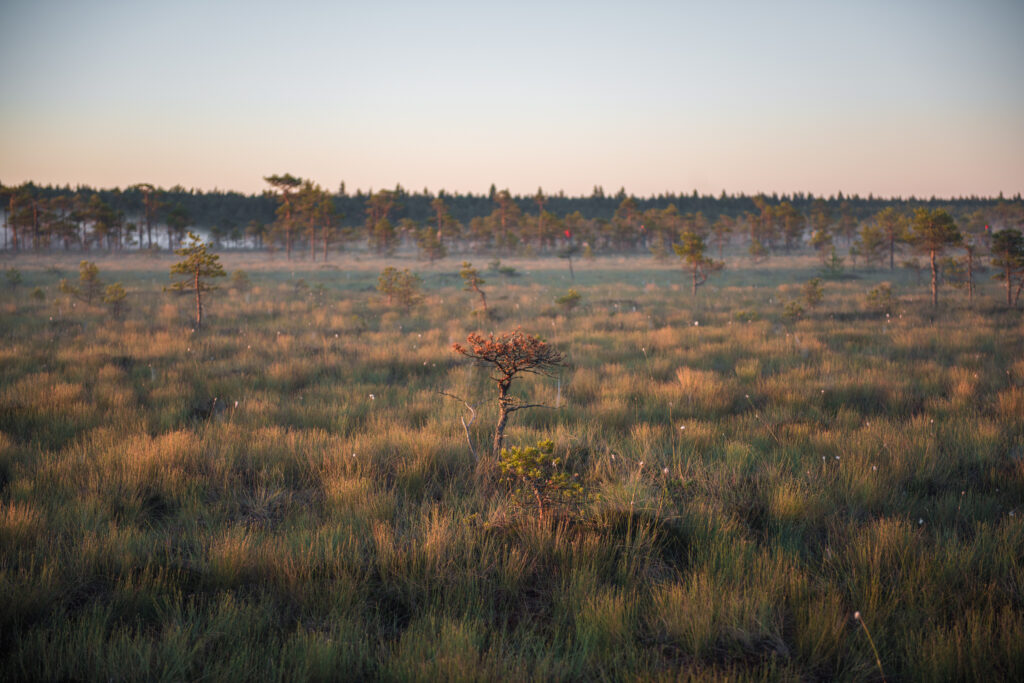
Finally, though, in 1918, Estonians declared themselves a republic and would have the opportunity themselves to fix the date of their Midsummer celebration into law. The Swedes and Finns both chose to ensure it was a weekend celebration so fixed it to the nearest Friday and Saturday respectively (which creates one hell of a party weekend in the Swedish-Finnish border towns). But, if Estonians were tempted to match either of those, there was suddenly a new reason to ensure 23 June became the start of the celebration each year.
Before we get onto that, in case you’re wondering, astronomical Midsummer this year in Estonia is just after noon on 21 June at 12:13 PM. That also makes it the longest day, clocking in at about 18 hours and 40 minutes with the sun in the sky before it dips below the horizon. Yet, for extra confusion, the shortest night isn’t the closest night to that in our calendars because just after noon as we know it is actually before the real solar noon about an hour later.
But, unless you have a deep interest in astrophysics, none of this is particularly important for celebrating Midsummer. In fact…
It’s not even entirely about Midsummer
Before Estonians could fix the date of Midsummer in their new republic, they had bigger problems to deal with. Estonia, like Latvia, was in a war for its very survival against both Baltic German and Red Russian forces. The odds of history were not looking good for the fledgling republics in between them.
However, Midsummer of 1919 proved to be a key turning point. After successfully repelling attacks from Baltic German forces along Estonia’s southern border where they controlled most of Latvia, Estonian and Latvian units worked together to launch a successful counterattack into Latvia on 23 June, known as the Battle of Cēsis. It was a pivotal moment that helped both countries proceed towards an outright victory in their wars of independence.
As a result, 23 June became Victory Day in Estonia and therefore merged with jaanipäev as a two-day national holiday and intertwined celebrations.
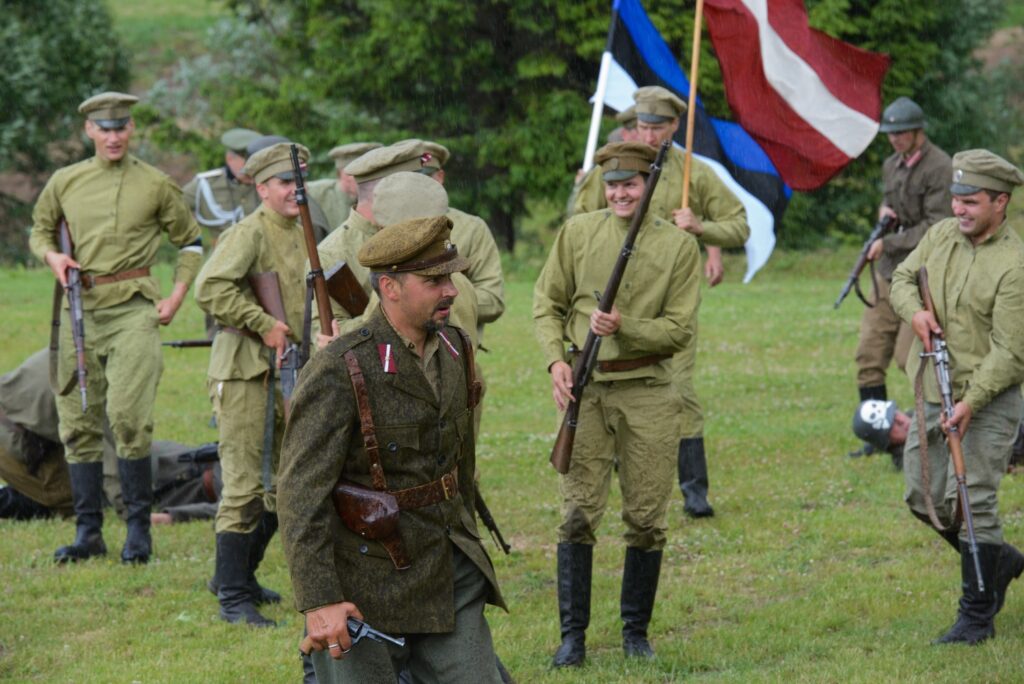
Midsummer is celebrated just as fervently in our fellow Baltic states of Latvia and Lithuania at the same time. For Latvia, 23 June shares that special historical significance from their War of Independence. Funnily enough, however, Midsummer only became an official public holiday for Lithuania in 2004, following a successful lobbying campaign by a brewery.
During the later Soviet occupation, this patriotic aspect of Midsummer took on even more important significance. Midsummer was not just a celebration of the culture as a people, but also Estonia’s independence as a republic that would eventually be restored.
This also means that 23 and 24 June are Estonia’s only two consecutive flag days when everyone is required to raise the Estonian flag on their homes and businesses.
Just as Midsummer is poetically regarded as the night sunset and sunrise meet each other, the law also treats it as if the night officially doesn’t exist. Estonian flags are usually lowered at sunset, apart from those required permanently, which must be illuminated at night. But the law says on Midsummer night, people don’t lower the flags nor need to illuminate them on their homes.
Remember that legally you must raise your flag at sunrise on 23 June or no later than 8 AM. In reality, if you are still at home in any of our big towns on that day then you end up like an extra in a zombie survival movie, so you’ll start to see the scattered appearance of Estonian flags earlier in the run up to Midsummer as a sign that people are already on their way to their party destinations in the countryside.

It usually rains
If there’s one belief that unites Estonians, other than the fact that sour cream goes with pretty much everything, it’s that it usually rains on 23 June. It quite literally rains on the (Victory Day) parade.
Last Midsummer, a powerful storm hit Estonia suddenly in the afternoon, just as most people were setting up outside for guests. It pulled down numerous trees and power lines, leaving more than 10,000 people without power in Harju County alone, which is more than a little inconvenient when you have a big party planned and so do the people whose job it is to fix the power lines.
At the time of writing, it’s forecast to be warm and sunny this year. So is there really any data to prove it usually rains on 23 June in Estonia?
I reached out to weather expert Kairo Kiitsak from the Estonian Environment Agency to find out. He says it’s a myth that 23 June has been more prone to rain than the average rainfall around this time of year, but he thinks people are just more likely to remember the rainy ones. Over the past half century, he explained while looking at the data, the number of dry and at least partly rainy Midsummer Days have been “almost equal”.
I had to press him on that “almost” bit though.
“If we look at the data collected from the centre of Estonian counties,” he continued, “we can see that 49 per cent of Midsummer Days have been dry.”
So Estonians are right! It is more likely than not to rain on Midsummer. Admittedly, we’re talking about a single percentage point, though, and, even then, only rain for part of the day. After the storm last year, for example, we did have a beautifully warm evening.
“Last Midsummer was a new all-time June temperature record for Estonia,” Kiitsak added. “The highest air temperature reached 34.6 degrees Celcius in Narva, beating the previous record for June of 34 degrees Celcius recorded in 1905. And at least 15 out of our 25 weather stations recorded their own June records that day.”
So, even if it does rain, it’s not the end of the world (unless you count the impending climate disaster) and there will be a firepit and hopefully a sauna to keep you warm anyway.
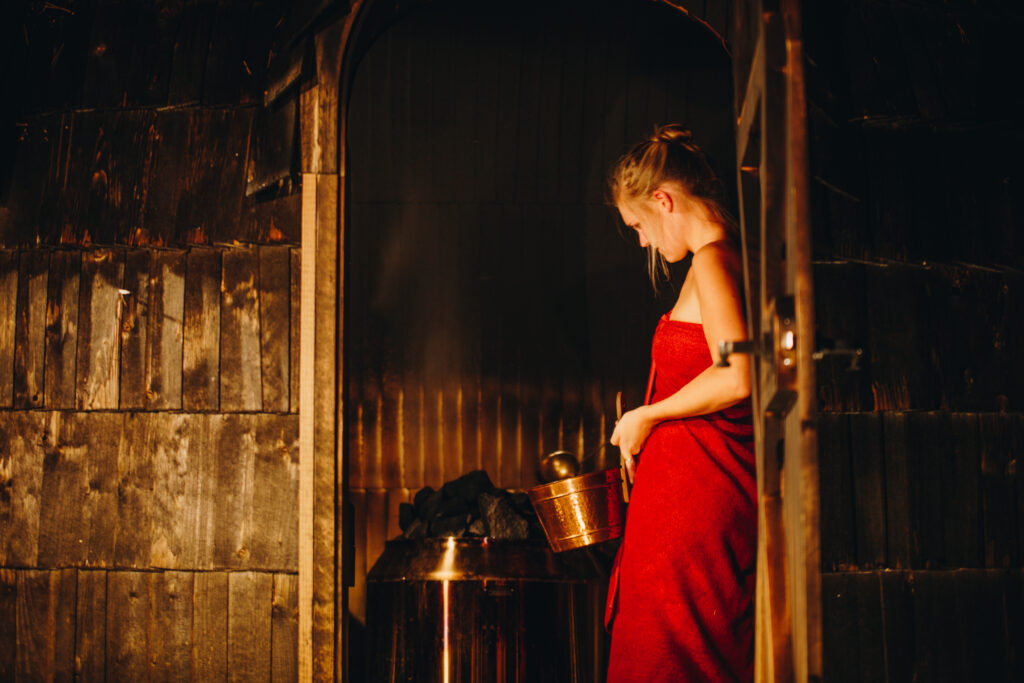
It’s a good time to make vihad
Those bundles of branches that we beat ourselves with in the sauna, usually made of birch, are known as viht in Estonian (or vihad in plural). Just make sure you pronounce every letter as English speakers tend to drop the ‘h’ then it becomes something you really shouldn’t be saying in the sauna.
Although people use them throughout the year, Midsummer night is traditionally the deadline for making them all so it’s a fun way to spend the time before the party begins and ensures your sauna will smell like this wonderful time of year even in the depths of winter.

Estonians don’t just do it at this time of year out of tradition though. There’s a very specific period after spring when the branches and leaves have grown long enough to use but aren’t yet too hard and rough. That’s usually right before Midsummer night, although can vary a little with the climate.
While buying vihad throughout the year is as easy as stopping by a gas station, venturing into nature to make them yourself is its own reward.
Estonia’s Forest Act allows you to collect these branches even from public forests as long as you don’t harm the longer-term growth of the trees. Simply make a clear cut with pliers about 1 centimetre from where the branch extends out. If you leave too much, then the tree is going to waste its energy trying to save a dead branch. Also, make sure you don’t take too many branches from any one tree and never ever, ever take the top of the tree.
You then need to arrange the branches into a candle flame shape of about an arm’s length using the straightest and leafiest branches, aligned together at the top of the leaf end, while pulling away excess leaves and branches at the handle, which can later be tied and cut off at the end with an axe.

If you make lots, you can preserve them for the rest of the year by drying them and then putting them away in a box or the freezer. However, do keep some to use at Midsummer as there’s nothing better than fresh vihad.
The fern blossom (probably) doesn’t exist
One thing that makes Midsummer night particularly special is the fern blossom. It’s said to only appear on this night and can magically bestow happiness and riches to those that find it.
The fern blossom is so beloved that the Estonian word for it, sõnajalaõis, even won a public vote by Estonians to find the most Estonian of Estonian words.
One slight problem. Ferns aren’t actually flowering plants, at least according to all the world’s botanists. They don’t blossom, not at Midsummer – nor ever. At least, no one has ever returned with any evidence of it.
But, just in case they are wrong, young Estonian couples still go off into the woods searching for it anyway on this most romantic night of the year. I mean, what else could they be doing when they say they are searching for the fern blossom?
Unsurprisingly then, the fern blossom is a symbol of fertility and those riches and happiness are actually considered a reference to what can happen nine months after supposedly searching for it.
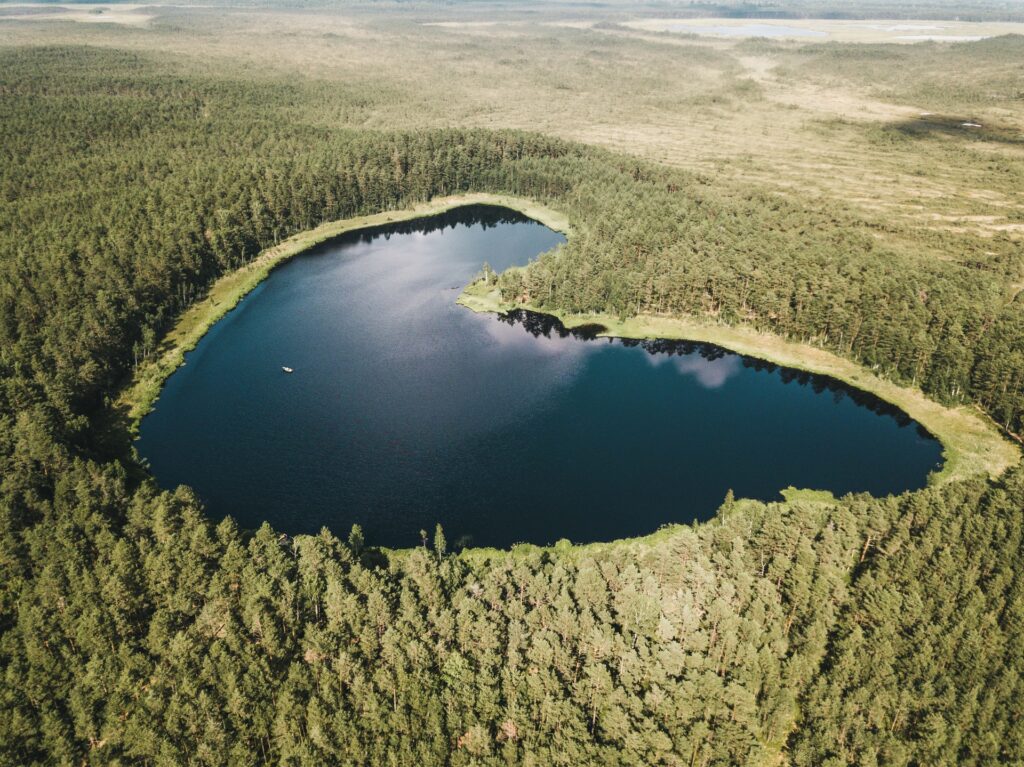
If you are spending Midsummer in Tallinn, you actually can find a fern blossom, albeit depicted in a large wall mural, at the back of a building opposite Kalma sauna in Kalamaja.
And the other way to earn yourself good fortune at Midsummer is to successfully jump over the bonfire, the most immediate of which is the fortune of not landing on the bonfire.

